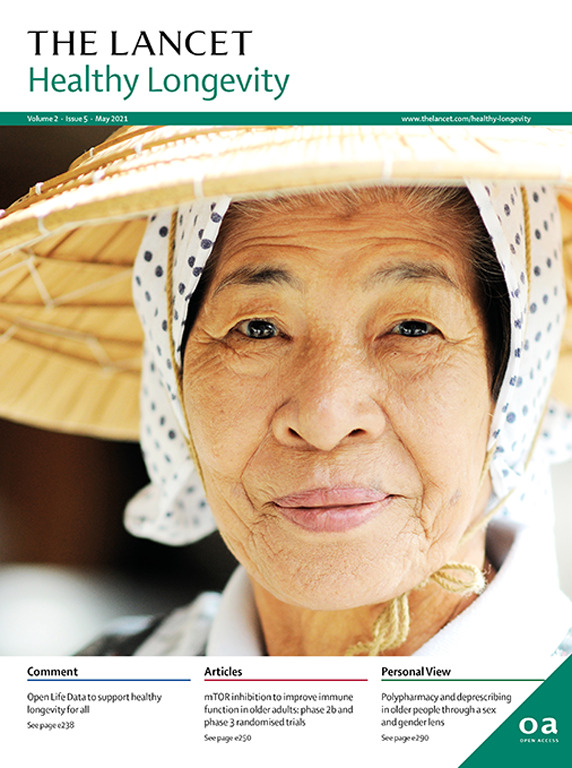Imaging biomarkers of ageing: a review of artificial intelligence-based approaches for age estimation
IF 14.6
Q1 GERIATRICS & GERONTOLOGY
引用次数: 0
Abstract
Chronological age, although commonly used in clinical practice, fails to capture individual variations in rates of ageing and physiological decline. Recent advances in artificial intelligence (AI) have transformed the estimation of biological age using various imaging techniques. This Review consolidates AI developments in age prediction across brain, chest, abdominal, bone, and facial imaging using diverse methods, including MRI, CT, x-ray, and photographs. The difference between predicted and chronological age—often referred to as age deviation—is a promising biomarker for assessing health status and predicting disease risk. In this Review, we highlight consistent associations between age deviation and various health outcomes, including mortality risk, cognitive decline, and cardiovascular prognosis. We also discuss the technical challenges in developing unbiased models and ethical considerations for clinical application. This Review highlights the potential of AI-based age estimation in personalised medicine as it offers a non-invasive, interpretable biomarker that could transform health risk assessment and guide preventive interventions.
衰老的成像生物标志物:基于人工智能的年龄估计方法综述。
实足年龄,虽然在临床实践中常用,但未能捕捉到衰老率和生理衰退的个体差异。人工智能(AI)的最新进展已经改变了使用各种成像技术估计生物年龄的方法。本综述整合了人工智能在脑、胸部、腹部、骨骼和面部成像方面的年龄预测进展,使用了不同的方法,包括MRI、CT、x射线和照片。预测年龄和实际年龄之间的差异通常被称为年龄偏差,是评估健康状况和预测疾病风险的一个有前途的生物标志物。在这篇综述中,我们强调了年龄偏差与各种健康结果之间的一致关联,包括死亡风险、认知能力下降和心血管预后。我们还讨论了开发无偏见模型的技术挑战和临床应用的伦理考虑。本综述强调了基于人工智能的年龄估计在个性化医疗中的潜力,因为它提供了一种非侵入性、可解释的生物标志物,可以改变健康风险评估并指导预防干预。
本文章由计算机程序翻译,如有差异,请以英文原文为准。
求助全文
约1分钟内获得全文
求助全文
来源期刊

Lancet Healthy Longevity
GERIATRICS & GERONTOLOGY-
CiteScore
16.30
自引率
2.30%
发文量
192
审稿时长
12 weeks
期刊介绍:
The Lancet Healthy Longevity, a gold open-access journal, focuses on clinically-relevant longevity and healthy aging research. It covers early-stage clinical research on aging mechanisms, epidemiological studies, and societal research on changing populations. The journal includes clinical trials across disciplines, particularly in gerontology and age-specific clinical guidelines. In line with the Lancet family tradition, it advocates for the rights of all to healthy lives, emphasizing original research likely to impact clinical practice or thinking. Clinical and policy reviews also contribute to shaping the discourse in this rapidly growing discipline.
 求助内容:
求助内容: 应助结果提醒方式:
应助结果提醒方式:


